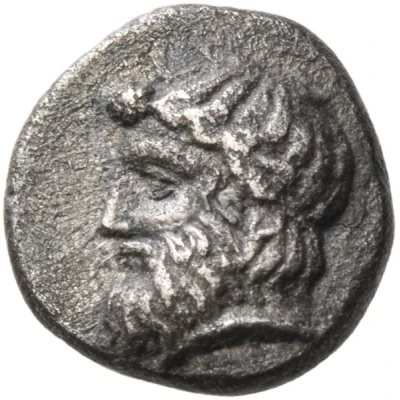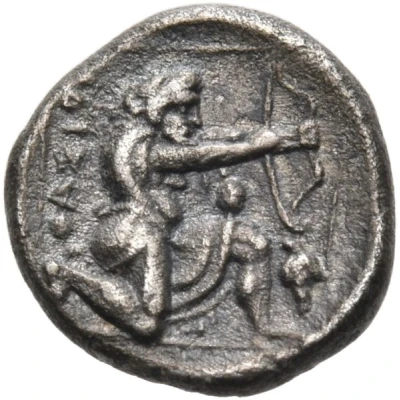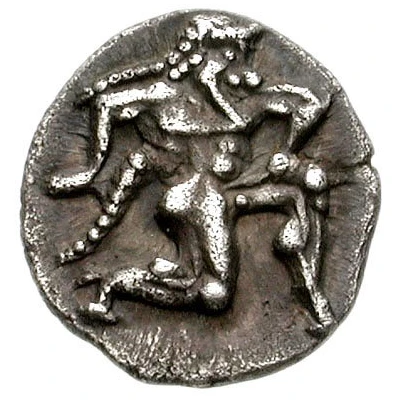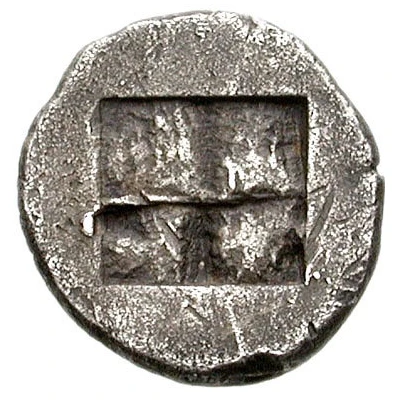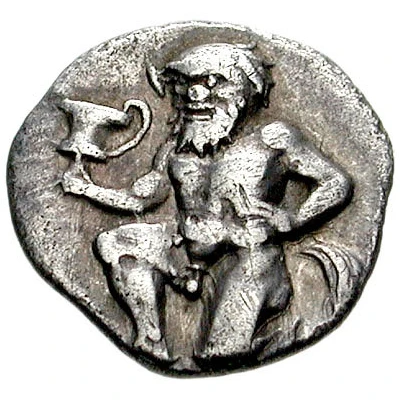
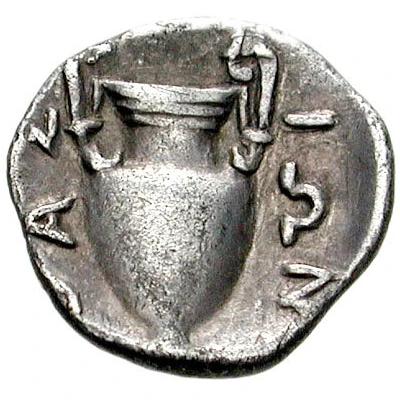

© Classical Numismatic Group, Inc.
Trihemiobol 340 BC - 300 BC
| Silver | 0.74 g | 12.0 mm |
| Issuer | Thasos (Thracian Islands) |
|---|---|
| Type | Standard circulation coin |
| Years | 340 BC - 300 BC |
| Value | Trihemiobol (¼) |
| Currency | Drachm |
| Composition | Silver |
| Weight | 0.74 g |
| Diameter | 12.0 mm |
| Shape | Round (irregular) |
| Technique | Hammered |
| Demonetized | Yes |
| Updated | 2024-10-10 |
| Numista | N#147304 |
|---|---|
| Rarity index | 93% |
Reverse
Amphora
Script: Greek
Lettering:
ΘΑΣ
ΙΩΝ
Comment
Traité IV 1154.
Interesting fact
The Trihemiobol coin from Thasos (Thracian Islands) was used as a form of currency during the 4th century BC, and its design features a unique combination of symbols and imagery. On one side of the coin, there is an image of a satyr, a mythical creature with the upper body of a man and the lower body of a goat, holding a kantharos, a type of ancient Greek cup. On the other side of the coin, there is an image of a rose, which was a symbol of the island of Thasos. The combination of these two symbols, the satyr and the rose, was meant to represent the island's rich agricultural resources and its connection to Greek mythology.
